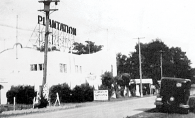At one time, the area between today’s Highway 61 and Clark Avenue along Lake Avenue was dotted with American Indian burial mounds. At least 10 earthen formations were documented in archaeologist J.V. Brower’s 19th-century map of the area. Today, all but one small mound have been removed, many due to a lack of understanding of what these rises in the lakeshore really were. In the spring of 1889, the largest of the mound group was deliberately removed after a divisive public battle. Nearly two years prior to its removal, the great mound was the site of a fatal accident involving a horse-drawn carriage carrying three visitors to White Bear Lake. The horse was spooked, the carriage was overturned, and one of its occupants did not survive; a lawsuit against the Village of White Bear ensued.
The Village Council had been under pressure to remove the mound for some time. Arguments in favor of its removal included that from William Leip, local resort owner, who claimed the mound obstructed the view of his resort.
Those against the removal of the mound included William Markoe, who owned the property on which a portion of it sat. Markoe, a former Episcopalian minister, had a deep respect both for history and sacredness of a burial site. He filed a court injunction to stop the removal of the mound and led a public campaign to save the ancient landmark. The court case was thrown out and the village was not held responsible for the carriage accident. The threat of future liability was too much, however, and the mound was removed in April, 1889.
Sara Markoe Hanson is the executive director of the White Bear Lake Area Historical Society. She will be sharing history thoughts monthly.









